Disclosure: This article contains affiliate links. We may earn a commission from purchases at no extra cost to you, which helps our travel content.
The first time I stepped into Marrakech's souks, I felt like Alice tumbling down the rabbit hole—disoriented yet utterly captivated. The sensory kaleidoscope of spice mountains, handcrafted lanterns casting constellation-like patterns, and artisans working with the precision I once applied to molars rather than metal. That was three years ago, when my astronomical pursuits first brought me to Morocco's dark sky regions. Since then, I've returned each spring, drawn not just by the stars above but by the earthly treasures within these ancient marketplaces. As a collector of traditional ceramics and someone who's haggled in markets from Kyoto to Cusco, I've developed a system for navigating these labyrinthine bazaars that transforms the often-intimidating experience into an enriching cultural exchange. Whether you're seeking a statement piece for your home or meaningful mementos of your Moroccan adventure, this guide will help you shop with confidence, respect, and joy.
Understanding the Souk Ecosystem
Marrakech's souks aren't just marketplaces; they're living museums where commerce and culture have intertwined for nearly a millennium. Unlike the sterile shopping experiences we've grown accustomed to in the West, these markets operate on traditions as old as the medina itself.
The souks are organized roughly by product—Souk Semmarine for textiles, Souk Cherratine for leatherwork, Souk Fekharine for my beloved ceramics, and so on. This organization dates back to medieval guild systems, though nowadays the boundaries blur as you venture deeper into the maze. During my second visit, I discovered that understanding this traditional layout provided both practical navigation benefits and deeper appreciation for the craftsmanship.
What continually fascinates me is how the souk ecosystem maintains its own internal logic. Prices aren't displayed because they're expected to be negotiated. Shopkeepers call out to passersby not out of aggression but tradition. The seemingly chaotic layout actually follows ancient urban planning principles that account for everything from sunlight exposure to delivery access.
Before diving into the shopping experience, I recommend spending your first morning simply observing. Find a rooftop café overlooking the souks—I'm particularly fond of Café des Épices—and watch the rhythm of the marketplace unfold below. This perspective shift helps you understand the ebb and flow before becoming part of it.
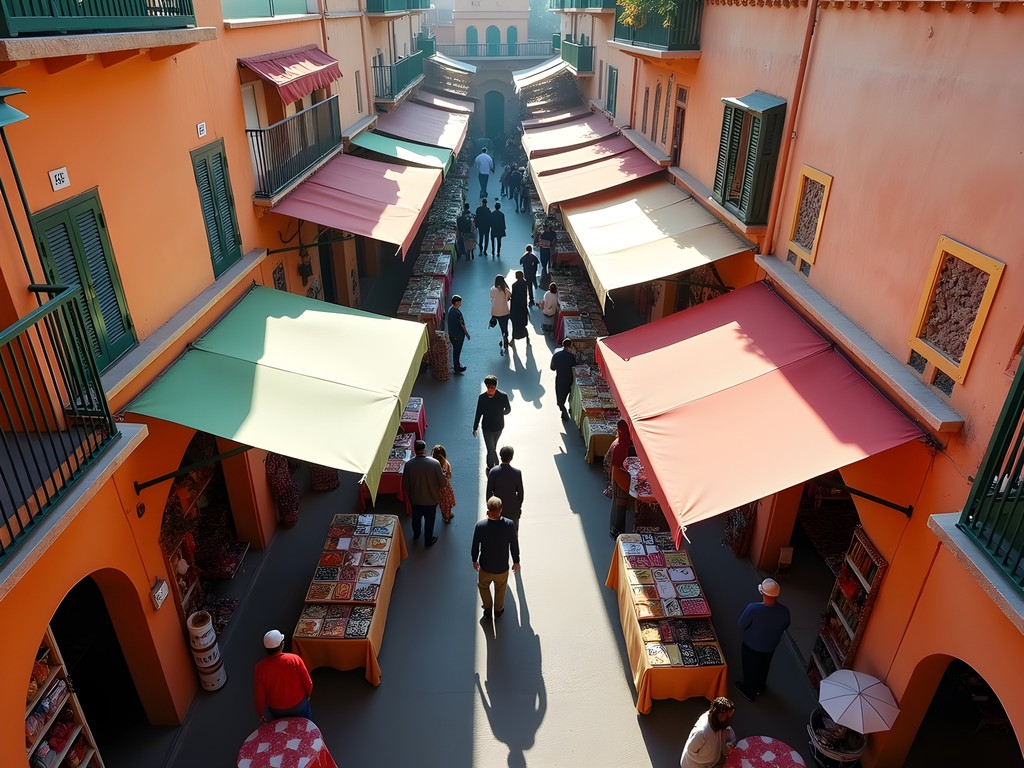
💡 Pro Tips
- Visit during early morning (8-10am) when shops are opening for a calmer experience
- Look up occasionally—the architecture above the shops often reveals the age and history of different sections
- Download an offline map, but don't rely on it completely—getting slightly lost is part of the experience
The Art of the Haggle: A Dentist's Precision Approach
As a dentist for three decades, I developed a methodical approach to complex procedures that, surprisingly, translates perfectly to bargaining in Marrakech's souks. Both require patience, precision, and a calm demeanor under pressure.
First, understand that bargaining isn't confrontational—it's conversational. In Moroccan culture, it's a dance of mutual respect. I've found that shopkeepers are more responsive to someone who approaches negotiation as a thoughtful exchange rather than a battle to be won.
My strategic approach begins with observation. Before expressing interest in any item, I note its quality compared to similar pieces in other shops. For ceramics especially, I examine the glaze consistency, check for hairline cracks, and assess the symmetry—details my dental training taught me to spot instantly.
When ready to engage, I begin with the Moroccan greeting "Salam Alaikum" and perhaps a simple "Shukran" (thank you) when the shopkeeper shows items. These small courtesies establish respect. I never ask the price of something unless I'm genuinely interested, as this initiates the bargaining process.
When the initial price is quoted, I don't counter immediately. Instead, I thoughtfully consider the item, sometimes setting it down gently while maintaining interest. My response is typically about 40% of the initial offer—this gives room for the dance to continue. The shopkeeper will likely look shocked (part of the performance) before countering.
During my last visit, I had my eye on a particular ceramic tagine with intricate blue geometric patterns. The initial price was 800 dirham. I offered 300, we settled happily at 450—both parties satisfied with the exchange.
For keeping track of prices and conversion rates, I rely on my travel calculator which is compact enough to slip into a pocket yet sturdy enough to withstand being pulled out repeatedly during a day of shopping.
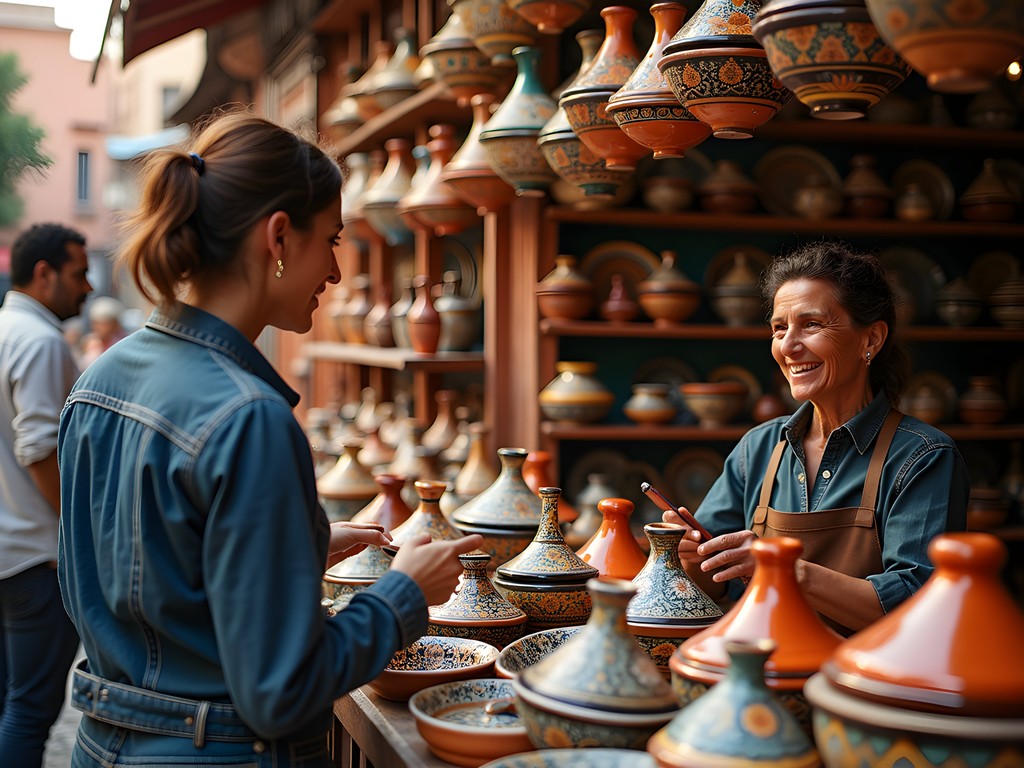
💡 Pro Tips
- Never show excessive enthusiasm for an item—maintain a poker face while assessing quality
- Have a maximum price in mind before starting negotiations and be prepared to walk away
- If you're quoted in euros, politely request the price in dirham instead—it's often advantageous
Authentic Treasures: Separating Artisanal from Assembly Line
After years of collecting ceramics across four continents, I've developed a discerning eye for authenticity—a skill particularly valuable in Marrakech where genuine handcrafted treasures share shelf space with mass-produced imitations.
The most coveted ceramics come from Fez (known for blue and white patterns) and Safi (famous for polychromatic designs). Authentic pieces have slight imperfections that reveal their handmade nature—asymmetries in pattern, variations in glaze, or the artisan's signature on the bottom. Mass-produced items, meanwhile, have suspicious uniformity and often feel lighter due to lower-quality materials.
When examining textiles like Berber rugs, I always carry a jeweler's loupe to inspect the knot density and dye quality. This small tool has saved me from numerous overpriced machine-made imitations. Authentic rugs have irregular knots visible on the back, natural fiber variations, and dyes that show subtle color gradations.
For metalwork, particularly the iconic Moroccan lamps, check for hand-punched designs rather than laser-cut patterns. Run your fingers along the edges—handcrafted pieces have subtle variations in texture that machine production cannot replicate.
During my last visit, I witnessed a disturbing trend: shops prominently displaying 'traditional' items that were clearly imported from China. When I expressed interest in seeing locally-made alternatives, many shopkeepers brought out their 'real stock' from back rooms—pieces made by family members or local artisans, often at similar prices but infinitely superior in quality.
Perhaps most important is developing relationships with artisans themselves. In the less-touristed corners of the souks, you can often find workshops where items are being created on-site. My most treasured Moroccan possession is a ceramic plate I watched being painted by a third-generation artisan named Hassan, whose family has operated from the same small workshop for over 80 years.

💡 Pro Tips
- Look for workshops with artisans actively working—these typically sell authentic pieces
- Ask about the symbolism in designs—knowledgeable sellers can explain traditional patterns and their meanings
- For textiles and carpets, request to see both sides—the reverse often reveals construction quality
Navigational Strategies for the Directionally Challenged
As someone who once got lost in a shopping mall in Canberra (true story), I approached Marrakech's infamous maze-like souks with considerable trepidation. Over multiple visits, I've developed navigation strategies that have transformed my experience from anxiety-inducing to confidence-building.
First, accept that getting lost is inevitable and part of the charm. The souks were intentionally designed with twisting pathways to slow down invaders—they weren't meant to be navigated efficiently! I now build 'getting lost time' into my itinerary, treating unexpected detours as opportunities for discovery rather than frustrations.
That said, having some navigational tools is essential. While smartphone maps work sporadically under the covered souks, I prefer a combination of digital and analog approaches. I use my hiking compass to maintain a general sense of direction—the same tool that serves me well on hiking trails around Mount Stromlo proves surprisingly useful in urban labyrinths.
Landmark identification is crucial. The minarets of major mosques serve as excellent orientation points when visible. Within the souks, I identify distinctive shops or architectural features (an unusually colored door, a specific cafe) to create mental breadcrumbs.
The most reliable strategy, however, is to focus on the flow of foot traffic. All paths eventually lead to major nodes—Djemaa el-Fna square, Rahba Kedima (the spice square), or one of the main entrance gates. When truly disoriented, I follow the most confident-looking locals, who invariably know the most direct routes.
During my second visit to Marrakech, I discovered the value of hiring a local guide for the first day. Mohammed, recommended by my riad, not only prevented me from getting hopelessly lost but also introduced me to hidden workshops I would never have found independently. The perspective gained during that guided day empowered me to explore independently afterward.
For those with serious concerns about navigation, consider dropping occasional location pins when you have GPS signal or taking photos of major junctions to help retrace your steps. And always carry your hotel's business card with the address in Arabic—if all else fails, any shopkeeper can point you toward a petit taxi.
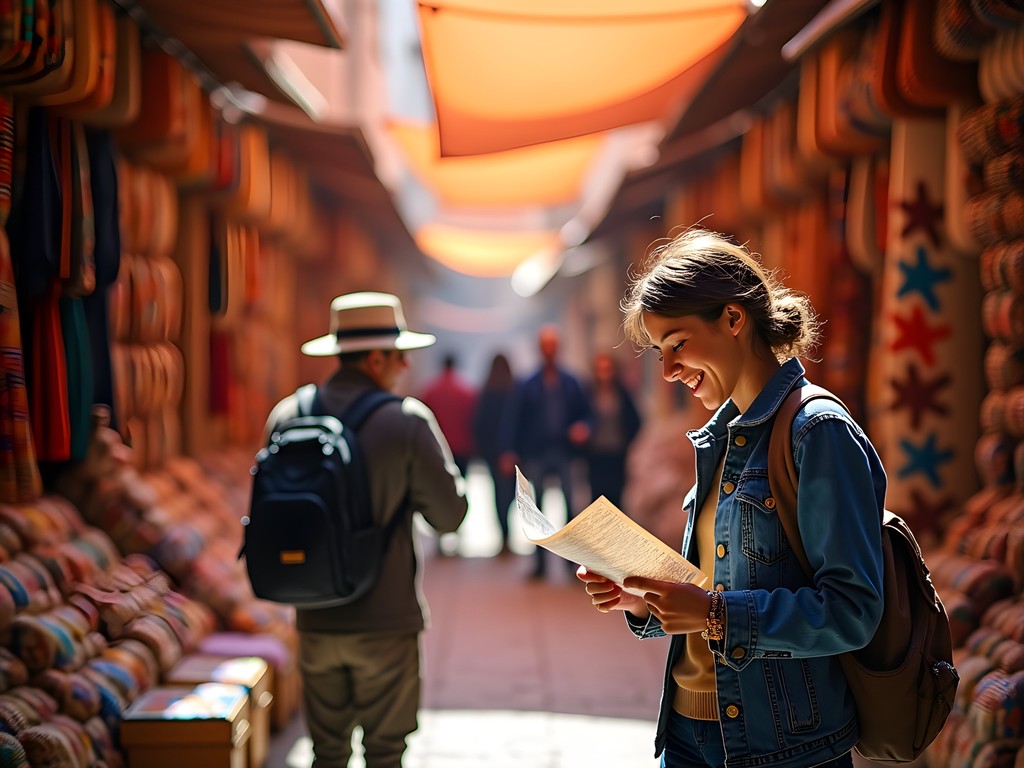
💡 Pro Tips
- Look for numbered plaques on walls—these are official markers that correspond to medina maps
- Remember shop names rather than locations—shopkeepers can direct you to other well-known establishments
- When truly lost, head uphill—you'll eventually reach the outer edge of the souks
Beyond Bargains: Cultural Exchange Through Commerce
The most profound lesson I've learned through my souk adventures is that the true value lies not in the items purchased but in the human connections formed during the process. What began as simple transactions during my first visit have evolved into meaningful cultural exchanges and even friendships.
My approach to souk shopping has transformed from focusing solely on price negotiations to seeking authentic cultural engagement. I now prepare by learning a few phrases in Darija (Moroccan Arabic) beyond the basic greetings. Simple expressions like "Bshhal hada?" (How much is this?) and "Ghali bzzaf" (Too expensive) delivered with a smile create instant rapport.
Accepting hospitality is crucial to this cultural exchange. When a shopkeeper offers mint tea, I've learned to accept graciously rather than suspecting a sales tactic. These tea ceremonies—where the beverage is poured from impressive heights into small glasses—create space for conversation that transcends commerce.
During my most recent visit, I brought a small photo printer that connects to my smartphone. After meaningful interactions with artisans, I would take their photo and instantly print a copy as a gift. This simple gesture reversed the typical tourist-vendor dynamic and opened doors to authentic connections. Hassan, the ceramic artist I mentioned earlier, was so touched by this gesture that he invited me to meet his family and share a home-cooked tagine.
I've also found that showing genuine interest in craft techniques elicits passionate responses. When I asked a woodworker about his specific carving methods, comparing them to techniques I'd observed in New Zealand, his entire demeanor transformed from salesman to proud artisan eager to demonstrate his skill.
Perhaps most importantly, I've learned to allocate time for these interactions. Rushing through purchases to check items off a shopping list misses the point entirely. Some of my most treasured Moroccan memories involve spending an hour with an elderly spice vendor who explained traditional medicinal uses for his wares, or learning backstrap weaving techniques from a Berber woman whose family has created textiles for generations.

💡 Pro Tips
- Learn the stories behind traditional crafts—many patterns and techniques have cultural significance worth understanding
- Ask permission before photographing artisans or their workshops
- Set aside specific days for 'slow shopping' with no agenda other than cultural immersion
Final Thoughts
As I carefully wrap my ceramic treasures in clothing before nestling them in my suitcase, I reflect on how Marrakech's souks offer far more than material acquisitions. Each piece carries a story—of the hands that crafted it, the cultural traditions it represents, and the memorable interactions that accompanied its purchase. The true souvenirs are the connections formed and perspectives gained through these commercial-cultural exchanges. Whether you're seeking a statement piece for your home or simply curious about traditional craftsmanship, approach the souks with patience, respect, and openness. The rewards extend far beyond the bargains secured. As the Moroccan saying goes, "He who brings back only what he went looking for returns empty-handed." May your souk adventures be filled with unexpected discoveries that continue to bring joy long after you've returned home.
✨ Key Takeaways
- Successful bargaining is about mutual respect and cultural understanding, not aggressive haggling
- Learning to identify authentic craftsmanship enhances both your shopping experience and the value of your purchases
- The most meaningful souvenirs are often the cultural exchanges and human connections formed during transactions
📋 Practical Information
Best Time to Visit
Spring (March-May) or Fall (September-November)
Budget Estimate
$50-100 per day for shopping, depending on purchases
Recommended Duration
Allocate at least 3 full days for souk exploration
Difficulty Level
Moderate
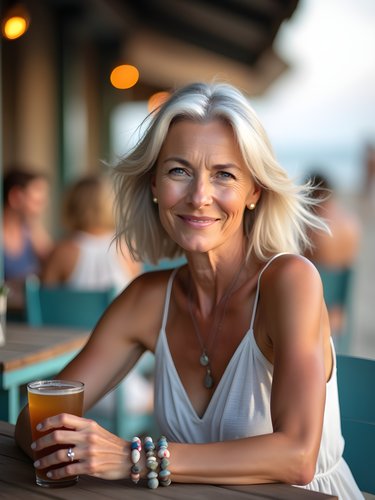
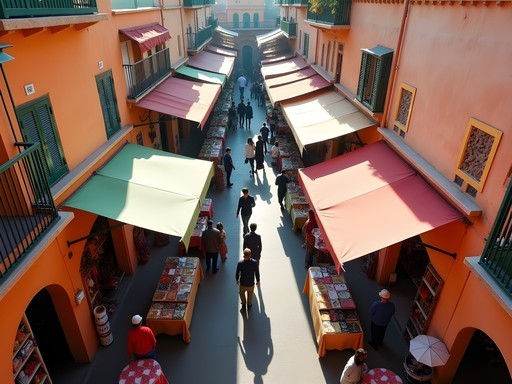
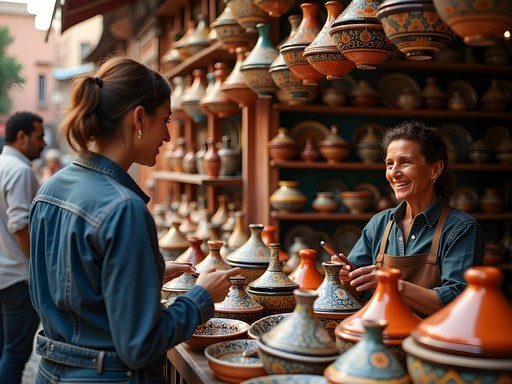
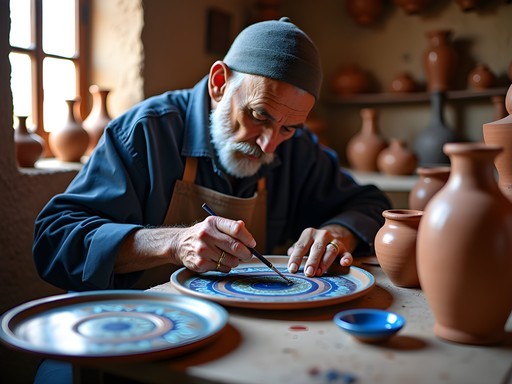
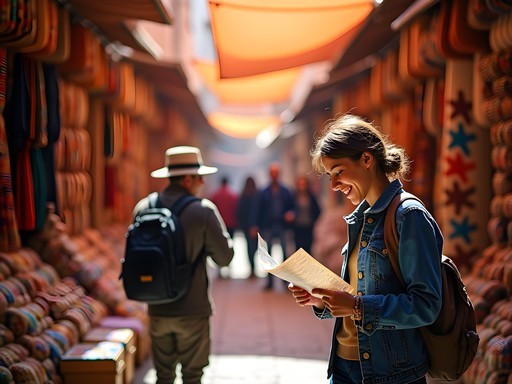
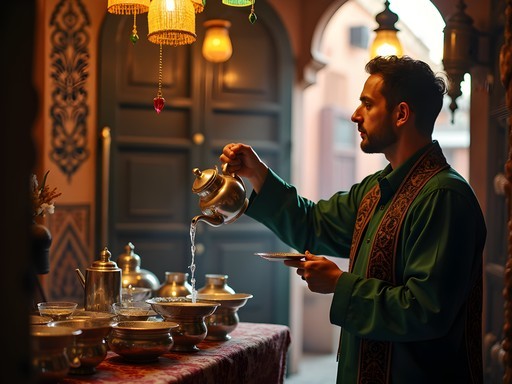


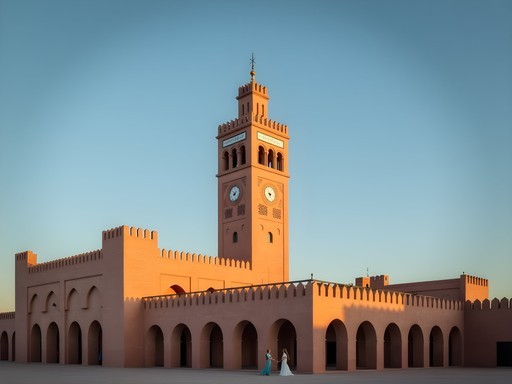

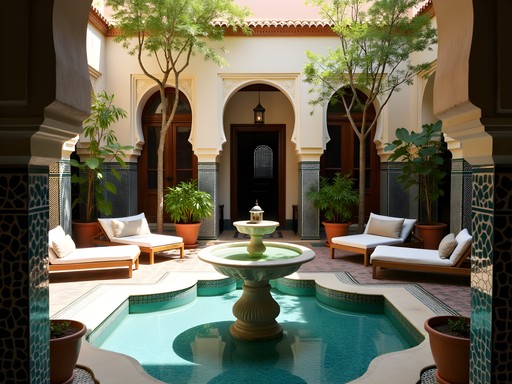





Comments
moonlegend
Just got back from Marrakech and used this guide extensively - thank you! One thing I'd add: take photos of items you like but aren't ready to buy. We circled back on our last day and got much better deals when vendors realized it was our final chance to purchase. Also, the carpet sellers near Bab El Khemis had better prices than the ones deeper in the souks.
Charlotte Watkins
Your 'Navigational Strategies for the Directionally Challenged' section resonated with me! When I took my family to Marrakech last spring, I was determined not to get lost in the souks. I used the pocket compass my husband gifted me, and it was surprisingly helpful when Google Maps got confused in those narrow alleys. One tip I'd add: we found hiring a local guide for our first day was worth every dirham. Our guide Hamid showed us authentic workshops where we watched artisans crafting items, explained the history, and helped us understand fair prices. By day two, we were confidently exploring on our own. The shopkeepers near Rahba Kedima square were especially kind to our teenagers, even offering mint tea while we browsed. Those personal connections became the highlight of our trip!
explorephotographer
How did you find your guide? Through your hotel or just in the square?
Charlotte Watkins
We booked through our riad's manager about a week before arriving. I'd recommend this approach over hiring guides in the square, as you're more likely to get someone vetted and registered. Cost us about 500 dirhams for a half-day tour.
traveltime
The 'Dentist's Precision Approach' to haggling made me laugh out loud! Can't wait to try these techniques next month!
cityseeker
Going to Marrakech in two weeks! Any specific souk areas you'd recommend for leather goods?
moonlegend
Not the author but check out Souk Cherratine for leather! Just be ready for the smell at the tanneries 😂 I bought an amazing bag there last year.
Kimberly Murphy
Astrid, this is EXACTLY the guide I wish I'd had before my first Marrakech trip last year! I made every rookie mistake - paid way too much for a 'silver' teapot (definitely not silver), got completely lost in the leather tannery section, and somehow ended up with THREE tagines I didn't need! Your precision approach to haggling is brilliant - especially starting at 40% of asking price. I found smiling and walking away usually brought the price down by at least 30%. Also worth mentioning: bringing small denominations of dirhams rather than large bills makes the whole process smoother!
traveltime
Kimberly, did you find most vendors spoke English or should I brush up on some French/Arabic phrases before going next month?
Kimberly Murphy
Most vendors in the main souks speak enough English to haggle, but learning a few Arabic greetings and 'thank you' goes a LONG way! French is also useful. And knowing how to say 'too expensive' (ghali bezzef) in Arabic always got me better prices!
explorephotographer
Those lantern photos are absolutely stunning! The colors just leap off the screen. Makes me want to book a flight right now!
Jean Wells
I appreciate your methodical approach to bargaining, Astrid. Having visited Marrakech annually for the past decade, I've observed a gradual shift in the souk dynamics. The vendors in Souk Semmarine have become increasingly sophisticated in their approach to tourists, while the artisans in the less-trafficked areas like Souk Haddadine (blacksmiths) still offer a more authentic experience. One strategy I've found effective is visiting during early morning (8-9am) when shopkeepers are seeking their 'first sale' of the day, which they consider lucky. They're often willing to offer better prices then. Also worth noting that the quality of leather goods varies dramatically - the shops near Criée Berbère typically source from better tanneries than those on the main thoroughfares.
Astrid Wagner
Jean, that morning tip is gold! I completely missed the 'first sale' phenomenon. Will definitely incorporate that into my next visit. Your insights on the leather quality differences are spot on too.
beachninja8943
OMG this brings back so many memories!! I literally got lost in the souks for THREE HOURS last summer! Best tip I learned: take photos of landmarks or shop fronts as you go so you can find your way back. Also, I found the Marrakech Pocket Guide super helpful because it has little maps of different souk sections. The carpet sellers are the most persistent - be prepared!
sunsetclimber4937
The getting lost part is half the fun though! 😄
beachninja8943
True! Until you're desperately trying to find a bathroom! 🙈
sunsetclimber4937
Those lanterns are gorgeous! Bought three last year and somehow got them home in one piece.
luckymood
Great post! I'm heading to Marrakech next month and I'm super nervous about the haggling part. How much should I expect to get prices down? Is 50% a good rule of thumb or does it vary by item?
Astrid Wagner
Thanks for reading! In my experience, 50-70% off the initial price is typical for tourist-oriented items. But it really depends - for higher quality artisanal pieces, maybe 30-40%. Start low, be friendly, and don't be afraid to walk away - that's often when the real price appears!
luckymood
That's super helpful, thank you! I'll practice my poker face before I go 😂
Venture X
Premium card with 2X miles, $300 travel credit, Priority Pass